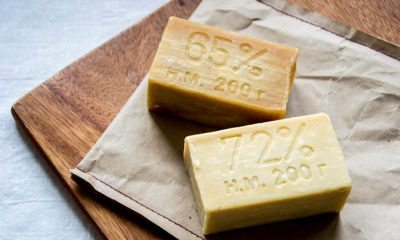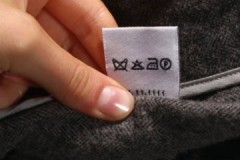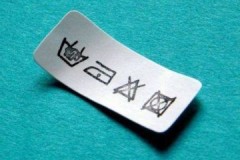Several effective methods for removing slime from clothes
 Slime has been one of the most beloved and popular children's toys for several years now. This unusual, bright little thing is crushed in hands, thrown at walls, and glued to various surfaces.
Slime has been one of the most beloved and popular children's toys for several years now. This unusual, bright little thing is crushed in hands, thrown at walls, and glued to various surfaces.
During such active games, slime often gets on clothes, as a result of which stains remain on the fabric that are difficult to remove.
But don’t despair right away; there are ways to quickly and effectively wash slime off your clothes and save your favorite item. So, how to wash clothes, bedspreads and other fabric products from slime, read the article.
Content
In what cases can you handle it at home, and when do you need dry cleaning?
 You should not experiment and try to remove a slime stain at home if we are talking about:
You should not experiment and try to remove a slime stain at home if we are talking about:
- expensive designer item,
- clothes made made of fur,
- from delicate thin fabrics (silk, satin, chiffon, lace).
Old, dried stains are also difficult to remove. If slime left its mark on clothes a week or more ago, it is better to seek help from specialists who, using special means and techniques, will return things to their original appearance.
In all other cases, it is quite possible to deal with slime stains on clothes on your own at home.
Dried stain and fresh stain - what is the difference in washing rules?
Dried slime stains, deeply ingrained into the fabric, are difficult to remove. Therefore, before starting washing and other manipulations, it is recommended to scrape off the remaining slime with a knife or other sharp object, and in the next step use cleaning products.
Step-by-step instruction
There are a number of methods designed to remove slime stains from clothes. Most of the techniques presented are universal and suitable for all types of fabrics, with the exception of very thin and delicate materials.
Impact of temperature conditions
 The thermal cleansing method is suitable for:
The thermal cleansing method is suitable for:
- denim,
- linen,
- terry,
- cotton fabrics.
It is enough to soak the item at a temperature of about 80-90°C and leave for 2-3 hours. After this, the clothes are washed in the usual way using any powder or stain remover.
For delicate fabrics (silk, knitwear, synthetics, wool) exposure to low temperatures is ideal. To get the result, the item with slime stains must be placed in the freezer, after putting it in a plastic bag.
After 3-4 hours, the jelly-like mass will harden and all that remains is to remove it with a knife or scissors. The main thing here is to act very carefully so as not to pierce the fabric.
Folk remedies
The following household products will also help you deal with slime stains on clothes:
- Lemon juice, ammonia and salt. The ingredients must be mixed in equal proportions and rubbed into the stained area with a stiff clothes brush, trying to penetrate as deeply into the fabric structure as possible. The optimal exposure time is from 5 to 10 minutes, depending on the age of the stain.
-
 Laundry soap - perhaps the most economical and effective method, which is also suitable for all types of fabric. To remove the slime, grind the soap using a fine grater, add a little water to make a porridge-like mixture.
Laundry soap - perhaps the most economical and effective method, which is also suitable for all types of fabric. To remove the slime, grind the soap using a fine grater, add a little water to make a porridge-like mixture.The resulting composition is applied to the site of contamination. After half an hour, the clothes are washed in the usual way by hand.
This method is very effective, but for old stains, the procedure will have to be repeated several times to achieve the desired result.
- Ethanol - one of the easiest ways to remove slime marks. It is enough to apply the product in an amount of 2-3 tbsp. on the stain, then wash the item in warm water.
- Hydrogen peroxide. Soak a cotton swab in peroxide and press firmly onto the stain. The active ingredients of this product have the ability to dissolve even deeply ingrained particles of the polymer from which the slime is made. Half an hour will be enough to remove even the most difficult, old stains.
Carefully! This method is only suitable for cleaning light, white fabrics due to the bleaching effect of peroxide.
- Acetone – excellent for cleaning fluffy fabrics, with the exception of natural fur. To remove traces of slime, simply treat the material with a cloth soaked in acetone and leave for 5-10 minutes.
This method is not applicable to things that have direct contact with the body, becauseStrong acetone particles are also difficult to wash out upon contact with the skin; it is possible that the remaining substances may cause irritation.
- Dish detergent good for removing fresh stains left by slime. You need to slightly wet the cloth, apply dishwashing detergent to it and wait about 20 minutes. After the specified time, wash the item in cool water.
- Petrol characterized by the presence of pronounced solvent properties. This product can remove any stain, regardless of how old it is. Please note: gasoline has a negative effect on the quality of fabric, so it is recommended to use this method only in exceptional cases and for processing not too expensive items.
Before the procedure, you should conduct a test by applying a little gasoline to a piece of cloth and leaving it for a while. The method of application is extremely simple: treat the slime stain with a cotton swab soaked in gasoline and wash it off after 10 minutes.
- Wine or apple cider vinegar applied to the site of contamination. The optimal exposure time is 15-30 minutes. Suitable for polyester, cotton fabrics in light colors.
Chemicals
A good way to clean clothes from traces of slime is with detergents and stain removers. It is recommended to give preference to potent preparations designed to remove paint stains, glue or chewing gum residues.
The following tools have proven themselves to be effective:
 Vanish. Used to remove coloring matter remaining after slime.
Vanish. Used to remove coloring matter remaining after slime.- Dr. Beckmann. An effective product designed to remove stains from paint, glue, and chewing gum.
- Runway RW-40. Universal automotive lubricant designed for all types of contamination.
Apply the product to the stain for no more than 5 minutes, then wipe thoroughly with a dry cloth and wash on a cycle suitable for the fabric.
- Amway LOC. To begin, soak the clothes in warm water for 10-14 minutes. Next, apply stain remover to the contaminated area and rub the stain a little. After half an hour, the item will need to be washed in a washing machine with the addition of powder and stain remover.
Strong household chemicals are not suitable for all types of fabric; they can change the color of the product or completely corrode the product. Therefore, first test the substance on a small piece of fabric from the inside of the clothing.
Processing fabric in a washing machine
After initial cleansing, you should wash your clothes using the intensive wash cycle. Choose the washing temperature based on the type of fabric:
- lace items, delicate linens, as well as clothes made of wool and silk should be washed at 30 degrees;
- jeans And padded down jackets – 30-40 degrees;
- synthetics, nylon, lycra must be washed at a temperature of no more than 50 degrees;
- non-fading cotton, as well as Kids' things wash at 60 degrees;
- at high temperatures - up to 95 degrees, it is permissible to wash only heavily soiled items from flax or cotton.
To achieve the maximum positive result, in addition to the powder and stain remover, it is recommended to add a few drops of ammonia to the water.
Which method is considered the most effective?
Reviews from users who have tried various methods of dealing with slime stains indicate the high effectiveness of the effects of temperature conditions.
For example, initially the item can be soaked in boiling water (or kept in the freezer), then treat it using some folk remedy. Next, you need to rinse the clothes in warm water, apply a stain remover or other cleaning agent to the stain, and complete the procedure by machine washing.
If you are interested in how to remove slime from carpet, read this article.
You will find maximum useful information about washing clothes and various fabric products Here.
Video on the topic
This video will show you how to remove slime from clothes:
Conclusion
Slime stains are very difficult to remove, so you should avoid contact of this toy with clothing. If an unpleasant situation does occur, then There is no need to be upset, as the stain can be removed.
For this purpose, use improvised means, household chemicals at home, or contact specialists.


